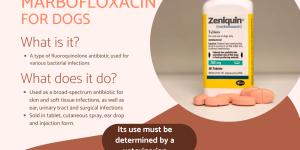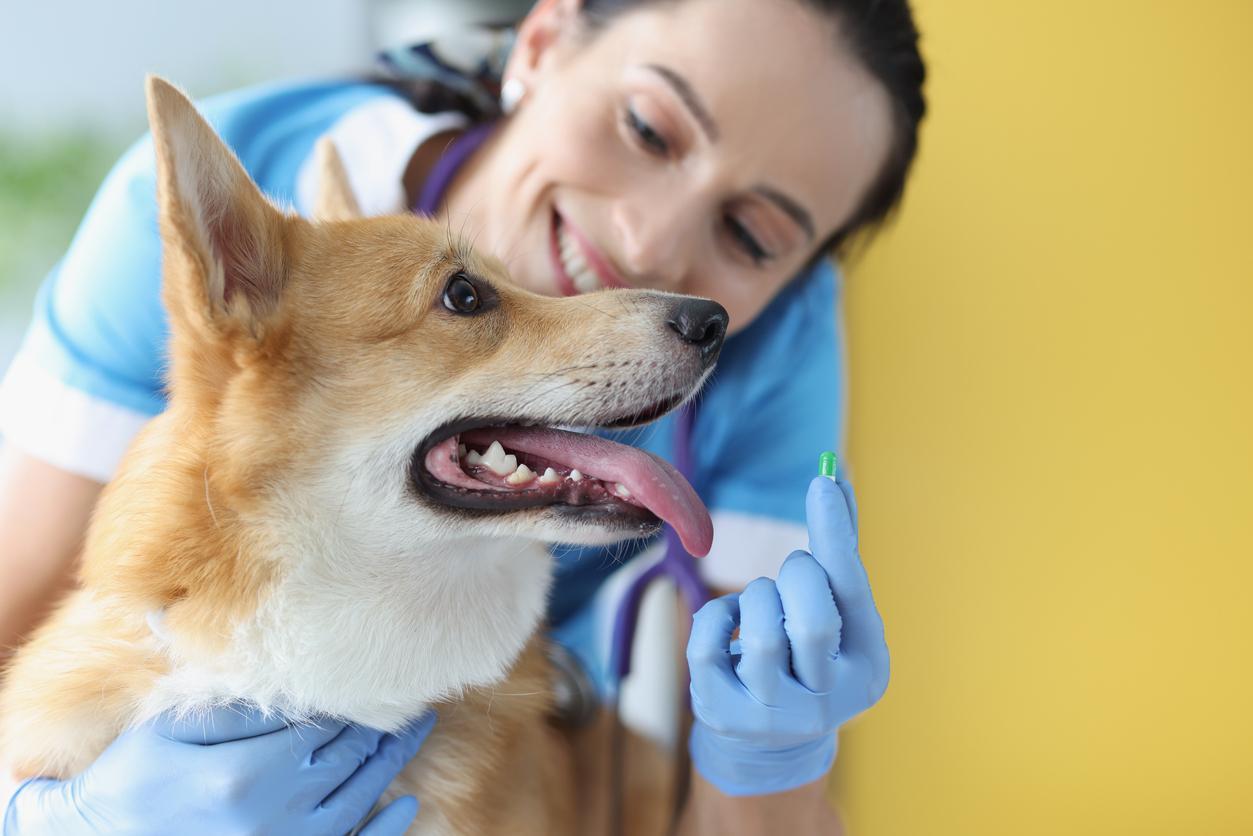Theophylline for Dogs - Uses, Dosage and Side Effects



See files for Dogs
Theophylline is an alkaloid of the methylxanthine family. Due to its bronchodilator effect, it is used to treat various respiratory diseases in dogs. Although it is an effective drug for this purpose, it has a narrow therapeutic index range, meaning administration at the wrong dose can occur easily. Dosage needs to be individualized according to the specific dog's needs, prescribed by a qualified veterinary professional and monitored closely for negative reactions. Side effects are possible and contraindications exist for certain dogs.
At AnimalWised, we discover more about theophylline for dogs, sharing its dosage, uses, contraindications and side effects. We see why theophylline for canine use is risky and why it is so important to follow veterinary instruction closely.
What is theophylline for dogs?
Theophylline is an alkaloid that belongs to the methylxanthine family. It is commonly used in veterinary medicine to treat various respiratory diseases. It shares this family with other common compounds such as caffeine. Like caffeine, theophylline affects the central nervous system
Methylxanthines are drugs that act on purinergic signaling, having a direct effect on the central and peripheral nervous systems. More specifically, they block the purinergic signals which result in a stimulatory effect. Methylxanthines are effective in treating respiratory problems because they relax the muscles around the airways, so they open up, allowing the dog to breathe more easily. They also reduce lung response to irritants.
Respiratory problems in dogs may be due to mild respiratory disease, but may also reflect cardiac problems, especially in older dogs. Continue reading our related article to learn more about the most common causes of respiratory distress in dogs.
Theophylline for dogs uses
Theophylline is a drug that exerts effects in several organic areas. Among other things, it stimulates the nervous system, has a diuretic effect, a vasodilator or vasoconstrictor effect, and an inotropic effect on the heart. However, in dogs it is used to treat respiratory diseases due to its bronchial action, in the following ways.
- Relaxes bronchial muscles by producing bronchodilation
- Inhibits the release of bronchodilator neurotransmitters
- Increases mucociliary clearance
- Prevents fatigue of the diaphragm
- Reduces the dose of corticosteroids
Specifically to use in dogs, theophylline is also able to treat tracheobronchial disorders such as tracheal collapse, chronic bronchitis, or chronic obstructive pulmonary disease.
Difficult breathing (dyspnea) is a clinical symptom that should be of concern to every dog owner. The onset of labored and forced breathing can be quite sudden. It can also be the result of a progressive deterioration. If you notice your dog is having difficulty breathing through their nose, our article on why your dog is having trouble breathing can help you to know what to do.
Theophylline for dogs dosage
One of the reasons why theophylline is not usually used as first-line therapy is the tremendous variability in patient response. This is due to its relatively narrow therapeutic index, meaning even a slightly incorrect dosage can have serious negative effects. To avoid this, individualized dose adjustment in each animal and monitoring of plasma levels of the drug after administration are required.
As a guide, the following dosages are considered effective in dogs:
- Oral administration: 10 mg per kg body weight every 12 hours (although doses may vary from 7.5-30 mg per kg body weight every 12 hours).
- Intravenous or intramuscular administration: 4-8 mg per kg body weight.
Once treatment is started, it is important to monitor the plasma levels of the drug to adjust the dose for each patient according to the effect and the occurrence of side effects. This monitoring is something which cannot be done at home and needs to be carried out by the veterinary clinic. Blood samples are usually taken 5-7 days after administration, but we need to contact the vet immediately if we notice any side effects or bad reactions.
After the plasma levels are tested, dosage can be adjusted according to the dog's needs. Even after initial testing, we will need to monitor the dog closely. This means they may be repeated again every 3-6 months or until the veterinarian is satisfied.
Theophylline overdose in dogs
Theophylline overdoses in dogs can result from errors in dosing the drug or accidental massive ingestion, which is the most common cause. An overdose of theophylline leads to the occurrence of several adverse effects, including:
- Vomiting
- Tachycardia
- Tremor
- Agitation
- Seizures
If theophylline poisoning is detected in a pet, the animal should be taken to a veterinarian as soon as possible to prevent further poisoning by the drug. The veterinarian could induce vomiting, perform a gastric lavage or administrate activated charcoal or laxatives.
In any case, remember that it is critical to keep all medications away from your pets. This is the most effective way to prevent poisoning from accidental ingestion. If you ever find yourself in a situation where you suspect your dog may be poisoned, continue reading this other article on dog poisoning to learn what to do.
Side effects of theophylline for dogs
Although theophylline is a drug with numerous beneficial therapeutic effects, it can also cause various side effects, especially when administered in high doses. The main side effects associated with taking theophylline are:
- General central nervous system stimulation: in very high doses, it can cause nervousness, tremors, hyperesthesia, muscle contractions, hyperexcitability and even tonic-clonic seizures.
- Digestive signs: vomiting and diarrhea.
- Cardiac disorders: sinus or ventricular tachycardia, extrasystoles or ventricular arrhythmia.
- Vascular disorders: vasodilation and hypotension.
If any of these adverse effects occur, the plasma concentration of theophylline should be analyzed to adjust the dose. In severe cases, use of the drug should be discontinued.
Vomiting and diarrhea are relatively common in dogs when given theophylline and can sometimes worry their owners. This situation can become increasingly worrisome if it does not stop, similarly if blood appears in the vomit or feces. Continue reading in this other article where we explore all the possible causes of vomiting and diarrhea in dogs.

Theophylline for dogs contraindications
Before initiating theophylline treatment in dogs, consider the situations in which administration of this drug is contraindicated:
- Allergy or hypersensitivity to the active ingredient or other methylxanthines.
- Allergy or intolerance to the excipients of the medication: sucrose, lactose, starch, etc.
- Acute tachyarrhythmia.
- Lactation, as theophylline is excreted into breast milk.
- Treatments that include Enrofloxacin, clindamycin, cimetidine, allopurinol, lincomycin and/or β-blockers, as theophylline interacts with these drugs. Patients requiring combined treatment with theophylline and any of these drugs should be monitored to avoid possible overdose.
If you want to learn more about tachyarrhythmia and other forms of heart failure in dogs, read this other article where we explain the most common symptoms of heart failure in dogs.
This article is purely informative. AnimalWised does not have the authority to prescribe any veterinary treatment or create a diagnosis. We invite you to take your pet to the veterinarian if they are suffering from any condition or pain.
If you want to read similar articles to Theophylline for Dogs - Uses, Dosage and Side Effects, we recommend you visit our Medicine category.
- Spanish Agency for Medicines and Health Products. Technical Sheet Elixifilin 5.33mg/ml Oral Solution . https://cima.aemps.es/cima/dochtml/ft/45303/FT_45303.html
- Botana, L.M. (2016). Veterinary pharmacology: fundamentals and therapeutic applications. Pan American Medical Publishing House.






